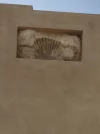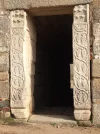- Time of past OR future Camino
- Some in the past; more in the future!
Edit: changed title of thread and article from 'Muslim Sites' to 'Islamic Architecture'
I did a search on the forum for 'Muslim' in the title of threads and found only three threads! While the camino is obviously a Christian pilgrimage, there are some incredible Islamic sites to be found on various camino routes and the history of medieval Spain is incomprehensible without the Muslim element of the story. With that in mind, I wrote about my favourite Islamic architecture on the peninsula this week - and all of them happen to be on the camino!
Best Islamic Architecture on the Camino de Santiago
The introduction:
Have you been to any of these places while on or off camino? Which ones did you find the most impressive and/or are you most interested in seeing?
I did a search on the forum for 'Muslim' in the title of threads and found only three threads! While the camino is obviously a Christian pilgrimage, there are some incredible Islamic sites to be found on various camino routes and the history of medieval Spain is incomprehensible without the Muslim element of the story. With that in mind, I wrote about my favourite Islamic architecture on the peninsula this week - and all of them happen to be on the camino!
Best Islamic Architecture on the Camino de Santiago
The introduction:
Though modern pilgrims cite various reasons for undertaking the Camino de Santiago - ranging from adventure to spirituality to physical exercise - the journey is, at its heart, a Christian pilgrimage with roots deep in the Middle Ages.
The medieval era in Spain is not simply a Christian story, however. On the contrary, the period is characterised by two seemingly contradictory phenomena: convivencia, or coexistence, between people adhering to the three major monotheistic faiths after the Moorish invasion of 711, and the reconquista, which saw Christian forces slowly advance south over a period of centuries and eventually end nearly 800 years of Muslim presence on the Iberian peninsula at the dawn of the Renaissance.
The legacy of Islamic rule in Spain — and on various routes of the Camino de Santiago — is nothing short of extraordinary. These are six of the best Muslim attractions on the camino, including five UNESCO World Heritage sites.
Have you been to any of these places while on or off camino? Which ones did you find the most impressive and/or are you most interested in seeing?
Last edited:
























